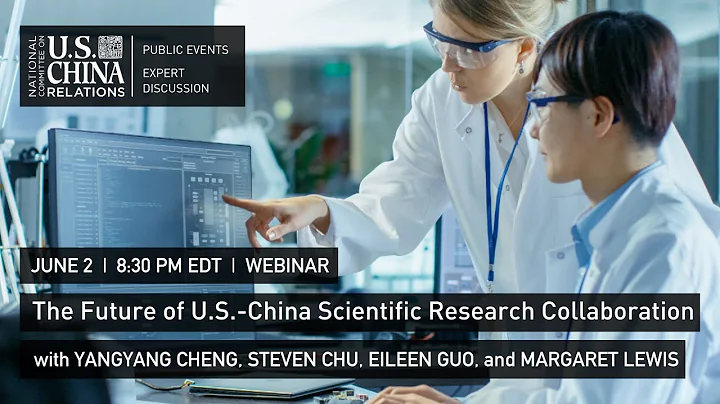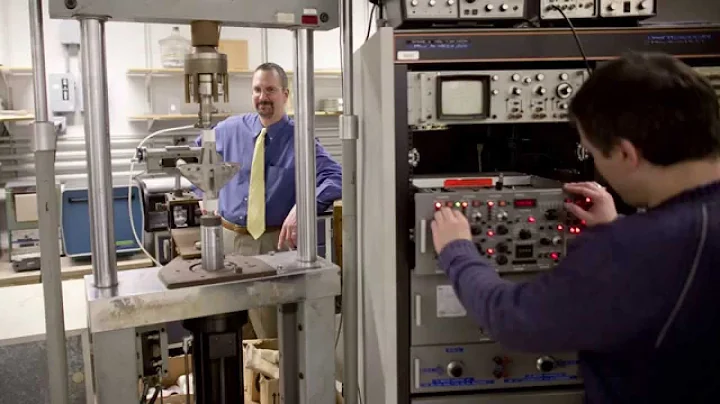
Guests interviewed in this issue:
Cheng He received his PhD from the Department of Polymer Science and Engineering, University of Science and Technology of China in 2006. He serves as an associate researcher at the State Key Laboratory of Polymer Physics and Chemistry, Institute of Chemistry, Chinese Academy of Sciences, and has collaborated with internationally renowned researchers. Professor Charles Han, a polymer physicist and neutron scattering expert, built the neutron scattering instrument together.
is currently a professor at the China Spallation Neutron Source Branch of the Institute of High Energy Physics. His research focuses on the dynamics of multi-scale multi-phase structures in soft matter. He has published 48 papers in well-known industry journals such as Macromolecules, Soft Matter, and Langmuir. . Currently, he is working on research on deriving the all-atom structure of disordered macromolecules through neutron total scattering.
In the important town of the Bay Area and on the bank of Songshan Lake, lies my country's largest scientific project with the largest single investment to date - the China Spallation Neutron Source (CSNS). This "important national weapon" jointly constructed by the Chinese Academy of Sciences and Guangdong Province has made our country the fourth country in the world to have a pulsed spallation neutron source, and is in line with the running spallation centers in the United States, Japan and the United Kingdom. Together, they form the world's four largest pulse spallation neutron sources.
The structure of matter determines the properties of matter. The spallation neutron source is like a "super microscope", an ideal probe for studying the microstructure of matter, and can help mankind uncover the mystery of the microscopic world . From its establishment in Dongguan in 2007, to its official put into operation after passing national acceptance in 2018, and now with the acceleration of the second phase of the project, the China Spallation Neutron Source has greatly improved Dongguan and even the Greater Bay Area in terms of source innovation. level of innovation.
However, the spallation neutron source is a complex entity composed of thousands of high-precision equipment. During its construction, in addition to solving basic scientific principles problems, it is also necessary to develop a large number of non-standard equipment, which combines engineering and The double complexity of research. It can be said that behind the birth of this "super microscope", three generations of scientific research and engineering personnel, old, middle and young, from the Spallation Neutron Source Science Center have devoted their efforts. At the same time, a strong team has been forged.
In the interview, Professor Cheng He elaborated on the significance of the spallation neutron source: "The spallation neutron source is a scientific research device for studying the characteristics of neutrons and detecting the microstructure and movement of matter. It can drive physics, chemistry, and life sciences. , materials science, nanoscience, medicine, national defense scientific research and new nuclear energy development and other disciplines.”
The China Spallation Neutron Source not only lights up the “source of innovation” in the Bay Area, but will also lead to the settlement of more large scientific facilities. Songshan Lake provides the most powerful support for building a science city with global influence!

"Dongguan Economy": Hello Professor Cheng, you came to Dongguan in 2014 and have been working at the Spallation Neutron Source. Based on your eight years of work experience, what do you think Dongguan's technological innovation capabilities are today? level, combined with the Spallation Neutron Source, a national-level scientific facility, what room for advancement does Dongguan have in terms of technological innovation in the future?
Cheng He: When I arrived in Dongguan in 2014, the field of scientific and technological innovation was relatively weak. With the establishment of the Spallation Neutron Source and the establishment of new institutions such as the Southern Light Source pre-research platform and materials laboratory, they gradually produced results. , Dongguan’s progress in the field of scientific and technological innovation across the country in recent years is obvious to all. Everyone often sees Dongguan in CCTV reports, which shows that the country still highly recognizes Dongguan in the field of scientific and technological innovation.

"Dongguan Economy": There are only four large scientific facilities with spallation neutron sources in the world. Judging from your experience of studying both China and the West, what strengths and capabilities does our country currently have in the field of technological innovation to catch up?
Cheng He: The development of the major scientific device was mainly after after World War II. After World War II, these countries led by the United States found that they needed to concentrate national efforts on major research directions. Moreover, the scientific instruments they needed could not be purchased by a research group or a university. Therefore, from that time on, there was the construction of large scientific facilities.
Our country’s first major scientific device was the positive and negative ion collider built in Beijing by the Institute of High Energy, Chinese Academy of Sciences in the 1980s. At that time, this device was built to tighten the belts of the people across the country. In the following five years, some devices will be put into operation. In the beginning, we followed suit and made some technological innovations. Nowadays, it can be seen that a considerable part of China's top ten scientific and technological advances every year are produced by large scientific equipment. For example, the Sky Eye recently said that it has discovered a signal similar to that of aliens. The Sky Eye is a big scientific device. In the development of scientific equipment, our country is now very close to the international leading level in quite a few areas.

"Dongguan Economy": In what industries and aspects can the results of this topic you are currently promoting be applied?
Cheng He: The project of micro-angle neutron scattering spectrometer that I am currently promoting is mainly to meet the requirements of Guangdong-Hong Kong-Macao Greater Bay Area , especially the requirements of the industry. In the field of micro-angle, its main application area is the internal structure of materials.
At the beginning of China's reform and opening up. We have done a lot of reverse engineering. For example, if there is a product from abroad, we will take it, analyze its ingredients, and then produce it in reverse. For example, Japan's offshore fishing nets have a much higher fishing yield than ours, and our reverse ingredients are exactly the same as theirs, but our fishing yields are far behind them. The reason is that the ingredients are the same but the structure is different, which involves the process during processing. Fields like this are a very important scope of research on micro angles.
In our future, things related to international people's livelihood, such as carbon fiber , the optimization of advanced fiber technology, is the main material of aerospace satellites, preferably carbon fiber, which must be light enough; because the load of the rocket is certain, in order to transport If more things are put on it, the load-bearing part must be as strong as possible and as light as possible. China's production of carbon fiber is already the world's largest. But our high-grade carbon fiber is still not enough. We still have to import it from Japan or the United States. It is because of this defect of our carbon fiber that it is not well controlled. Neutron reflection has a very important application in this regard.

Dongjing Think Tank is a company based on the concept of "ideas determine value" and its purpose of publicity, research, service and development of Dongguan economy; it adheres to locality, independence and originality, and strives to create a local publication of financial information and private think tank research results. Authoritative platform. We are based on "exploring the laws of economic development and serving Dongguan's innovation and transformation" and focus on promoting the prosperity and development of Dongguan's consulting industry and cultural industry. The platform has published more than 160 issues of Dongguan's local first financial publication "Dongguan Economy"; through the private think tank organization Dongguan Economic and Urban Development Research Association, it has established a national expert think tank resource library to create public welfare shared resources and development The platform expands the network of contacts and research resources through subject research and activity organization, forming a cross-regional, multi-dimensional, and wide-reaching intellectual collaboration system to provide enterprises with a full range of brand incubation, strategic consulting and management consulting solutions. , has now developed into an outstanding representative enterprise in Dongguan's consulting and cultural circles.
In the future, we will be rooted in reality, look forward to the future, and work with those who have both integrity and ability. We will adhere to the cooperative development principle of "consensus, co-creation, and sharing" to further improve service processes and service quality, create a comprehensive project development sector, and build With a brand-new industrial structure and scientific operation and management model, we strive to become a first-class think tank-type professional service provider for the cultural industry in China.

















![Rethinking Physics Informed Neural Networks [NeurIPS'21] - DayDayNews](https://i.ytimg.com/vi/qYmkUXH7TCY/hq720.jpg?sqp=-oaymwEcCNAFEJQDSFXyq4qpAw4IARUAAIhCGAFwAcABBg==&rs=AOn4CLDq7F6iLHKhjmAFymJhtlcYwaXiMw)
![AI/ML+Physics Part 1: Choosing what to model [Physics Informed Machine Learning] - DayDayNews](https://i.ytimg.com/vi/ARMk955pGbg/hq720.jpg?sqp=-oaymwEcCNAFEJQDSFXyq4qpAw4IARUAAIhCGAFwAcABBg==&rs=AOn4CLBMVhxazCgh0pAm1KCjDm3G5IBQXw)



